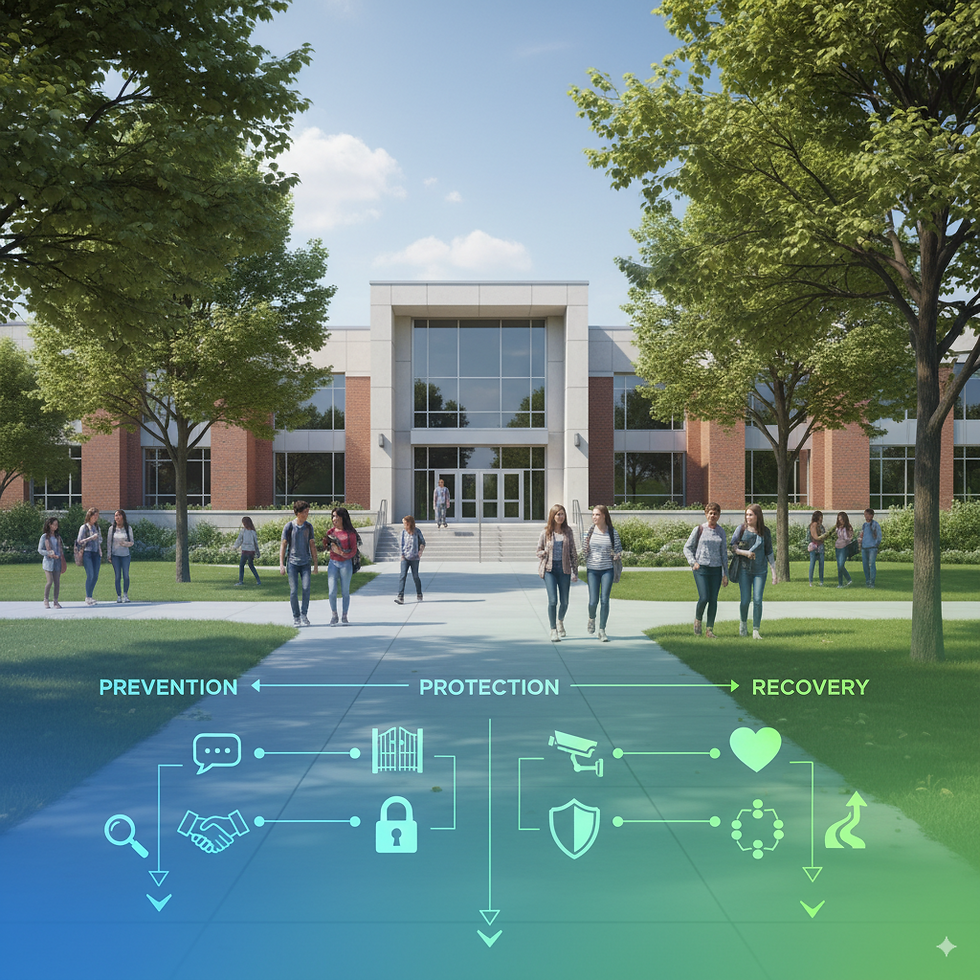Rebuilding Alcatraz in 3D: How Scanning Technology Is Revolutionizing Crime Scene Investigation and Virtual Justice
- Dr. R. Ryan Rider

- Apr 18
- 4 min read
Discover how 3D scanners and photogrammetry recreated Alcatraz Island in stunning detail—and how the same technologies are changing the face of forensic investigation and courtroom storytelling.

The Power of 3D Scanning: From Historic Icons to Forensic Innovation
In 2023, a groundbreaking project launched to digitally capture Alcatraz Island—one of America’s most notorious prisons—using state-of-the-art 3D laser scanners, drones, and photogrammetry tools. This initiative, backed by the National Park Service and several private tech firms, delivered a complete digital twin of the island, offering never-before-seen views into crumbling structures, buried tunnels, and the complex layers of history that span back to the Civil War.
But here’s the twist: while the data is being used to protect a national landmark, the same technology is relevant to law enforcement, crash reconstruction, and courtroom presentations.
At Triple R Investigations, we leverage these tools to document crime scenes, preserve evidence, and help ensure clear and precise justice.

Scanning Alcatraz: How It Was Done
Over three weeks, a team led by Pete Kelsey of VCTO Labs lived and worked on Alcatraz to complete the most complete digital documentation ever attempted on the site. The team used:
Aerial drones (e.g., AgEagle eBee X) for photogrammetry and thermal imaging.
Emesent Hovermap LiDAR for scanning interior rooms and tight spaces.
Boston Dynamics' Spot robot has scanners for unstable or toxic structures.
Terrestrial laser scanners to capture millimeter-accurate structural data.
This hybrid approach yielded over four terabytes of data, detailing every corridor's precise dimensions and textures, ceiling cracks, and wall inscriptions. More impressively, it exposed previously hidden features, like Civil War–era tunnels, graffiti, and prisoner escape routes.

Alcatraz in Virtual Reality: Preserving the Past, Exploring the Future
The high-resolution data was used to generate immersive 3D models—many of which can be explored in virtual reality (VR). This offers an entirely new way to interact with the island:
Walk through long-lost tunnels and dungeons inaccessible to the public.
See the escape route of the 1962 breakout from inside the prison vents.
Read 100-year-old prisoner graffiti carved into brick and stone—up close.
Visualize changes over time with side-by-side model comparisons.
These immersive models are more than digital archives—they are tools of interactive education, preservation, and historical transparency.

A Leap for Law Enforcement: From Alcatraz to Scanning Technology Is Revolutionizing Crime Scene Investigation
Here’s where it gets exciting for criminal justice professionals: everything used to recreate Alcatraz can be applied to real-world crime scenes and crash investigations.
Why Use 3D Scanners in Criminal Investigations?
Capture crime scenes with millimeter precision—before they’re disturbed.
Document evidence from multiple angles for later analysis.
Overlay trajectories, line of sight, or blood pattern evidence onto accurate 3D models.
Allow investigators, attorneys, and juries to “walk through” the scene using VR or courtroom projections.
This level of clarity transforms investigations from guesswork to data-driven reconstructions, improving outcomes both in the field and in trial settings.

Virtual Reality in the Courtroom: Evidence Comes Alive
One of the most significant impacts of 3D modeling is in the courtroom. Judges and jurors don’t always understand complex diagrams or witness accounts. But by showing them a digital walk-through of the scene, the story becomes crystal clear.
With VR or interactive 3D models, we can show:
Where key evidence was found.
The angles at which injuries or collisions occurred.
Lighting and visibility conditions at the time of the incident.
This is visual justice—ensuring that every item of evidence can be understood, not just stated.

Triple R Investigations: Technology Meets Truth
At Triple R Investigations, we specialize in bringing this precision to crash scenes, crime scenes, and courtroom reconstructions. Our team is trained in:
FARO 3D Scanning & Analyzer Pro.
Photogrammetry using UAV (drones).
Virtual Reality integrations for scene walkthroughs.
Expert testimony preparation for digital scene analysis.
Whether you’re a law enforcement agency, attorney, or private investigator, we provide courtroom-admissible documentation and immersive presentations that tell the whole story.
Just like Alcatraz was digitally preserved for the next 100 years, your scene or investigation can be preserved for trial, appeals, or review without losing a detail.
Conclusion: From Stone Walls to Street Corners—3D Scanning Is Justice’s New Lens
What began as an effort to preserve history on Alcatraz Island is now a vivid example of what’s possible in 21st-century forensic investigation. By combining 3D scanning, photogrammetry, and immersive digital platforms, we’re saving the past and protecting the future of law and justice.
Ready to bring high-tech truth to your case?
Contact Triple R Investigations today to learn how 3D scanning and VR can elevate your investigation, evidence, or courtroom impact.
Keywords:
3D scanning forensics, Alcatraz digital twin, crime scene reconstruction technology, VR courtroom presentation, photogrammetry crime scene, laser scanning investigations, FARO scene mapping, virtual crime scene walkthrough, law enforcement 3D technology, Triple R Investigations forensic services




Comments